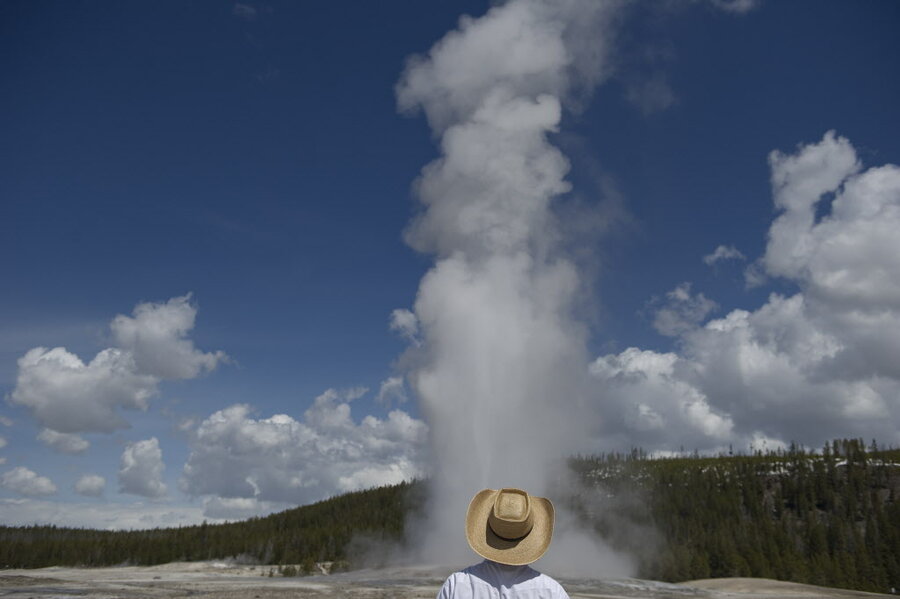Scientists try to make sense of Old Faithful's plumbing
Loading...
This month, the US Geological Survey (USGS) plans to fly a large, electromagnetic ring over Yellowstone National Park.
It’s all part of a new initiative to map the park’s underground plumbing. Scientists from the USGS, the University of Wyoming, and Denmark’s Aarhus University will study the flow of hot water through Old Faithful and Yellowstone’s many other geysers. The research could offer new insight into Yellowstone’s hydrothermal explosions, which have occurred irregularly throughout the park’s history.
“Nobody knows anything about the flow paths [of hot water],” USGS lead scientist Carol Finn said. “Does it travel down and back up? Does it travel laterally?”
Using a helicopter, researchers will fly a hoop-shaped electromagnetic system over Yellowstone for about a month. The device, which was developed in Denmark to map groundwater supplies, seeks to map Yellowstone’s hydrothermal innards without the need to dig. It works almost like an X-ray for hot water flow, able to distinguish water from rock as deep as 1,500 feet below the surface.
Hydrothermal explosions, though rare in Yellowstone, can be powerful. About 13,800 years ago, one such eruption produced a mile-wide crater at the bottom of Yellowstone Lake. By understanding the park’s hydrothermal blueprint, administrators could better plan for tourist safety and future development.
Yellowstone’s volcanic mechanisms are somewhat better known. In March, geologists used paleomagnetic data to identify the size and location of previous eruptions along the park’s most thermally-active regions. They found that a few very large blasts, rather than many smaller ones, rocked the Snake River Plain between 8 and 12 million years ago.
Last year, seismologists from the University of Utah discovered a new magma chamber, some 30 miles wide, beneath the park’s surface. The discovery seemed to support what many have theorized – that Yellowstone is actually a massive “supervolcano.”
The Christian Science Monitor’s Brad Knickerbocker reported:
[Researchers] emphasize that Yellowstone’s plumbing system is no larger – nor closer to erupting – than before. Now, however, they have used advanced techniques to make a complete image of the system that carries hot and partly molten rock upward from the top of the Yellowstone hot-spot plume – about 40 miles beneath the surface – to the magma reservoir and the magma chamber above it.
The so-called Yellowstone supervolcano could erupt with up to 2,000 times the force of Mount St. Helens, some scientists estimate. Devastating for sure, but University of Utah seismologists note that the odds are slim: the volcano has a 1 in 700,000 chance of erupting in any given year, they say.
This report includes material from the Associated Press.








